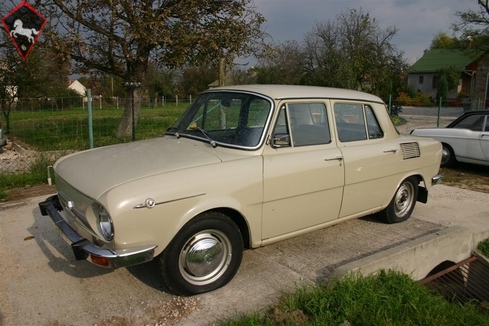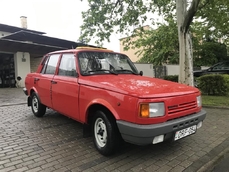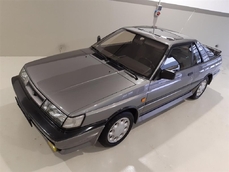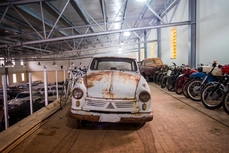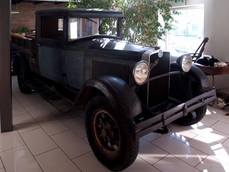Skoda 100/110 1970
General description :
http://www.victory.hu/en/cars/item/467-skoda-s100?ftype=
1970 Skoda 100/110 is listed sold on ClassicDigest in Budaörs by Auto Dealer for €4800.
Car Facts
Car type : Car Make : Skoda Model : 100/110 Engine size : 0.0 Model Year : 1970 Location : Gyár u. 2 2040 Budaörs, Hungary
Sold
Seller Information
Sold
Other cars listed for sale by this dealer
About Skoda
Skoda, the Czech automobile manufacturer, has a fascinating history that spans several decades, marked by both innovation and challenges. Here's a narrative overview, including significant models and the post-war communist era:Early History:
Founding Years: Skoda Auto began in 1895 when Czech entrepreneur Václav Laurin and mechanic Václav Klement started a bicycle repair shop. By 1905, they transitioned to producing automobiles and officially founded Skoda.
Pre-World War II Models: Skoda established itself as a reputable car manufacturer, producing models like the Skoda 422, 430, and 860. These cars were recognized for their quality, engineering, and design, with a few participating in motorsport events.
Significant Models:
Skoda Popular (1934-1946): The Skoda Popular was a significant model produced before and during World War II. It was a compact car known for its reliability and affordability.
Skoda Superb (1934-1949): The Superb was a luxury car that stood out for its advanced engineering and comfort, often used by dignitaries and officials.
Skoda 1101/1102 Tudor (1946-1952): After the war, Skoda resumed car production with the 1101 and 1102 models. These were popular family cars known for their durability and practicality.
Post-War Communist Era:
Nationalization and State Control: After World War II, Czechoslovakia fell under communist rule. Skoda, like many industries, was nationalized, leading to state control and directives in manufacturing.
Soviet Influence: During the communist era, Skoda's focus shifted towards producing vehicles in line with the government's economic plans, leading to standardization and limitations in design and innovation.
Post-Communist Era Revival:
Transition to Market Economy: After the fall of communism in 1989, Skoda underwent significant changes. It entered into a joint venture with Volkswagen in the early 1990s, bringing in new technology, investment, and management practices.
Modernization and Expansion: Under Volkswagen's ownership, Skoda underwent a remarkable transformation. Models like the Octavia, Fabia, and Superb were introduced, blending Skoda's heritage with modern design, reliability, and affordability.
Legacy and Modern Skoda:
Today, Skoda is recognized as a successful European automaker, renowned for producing well-engineered, practical, and value-for-money vehicles. It has gained a reputation for quality and innovation, carving a place in the global automotive market while maintaining its Czech heritage.
The brand's journey from its pre-war excellence through the challenges of the communist era to its modern success with Volkswagen partnership illustrates Skoda's resilience, adaptability, and commitment to automotive excellence.
